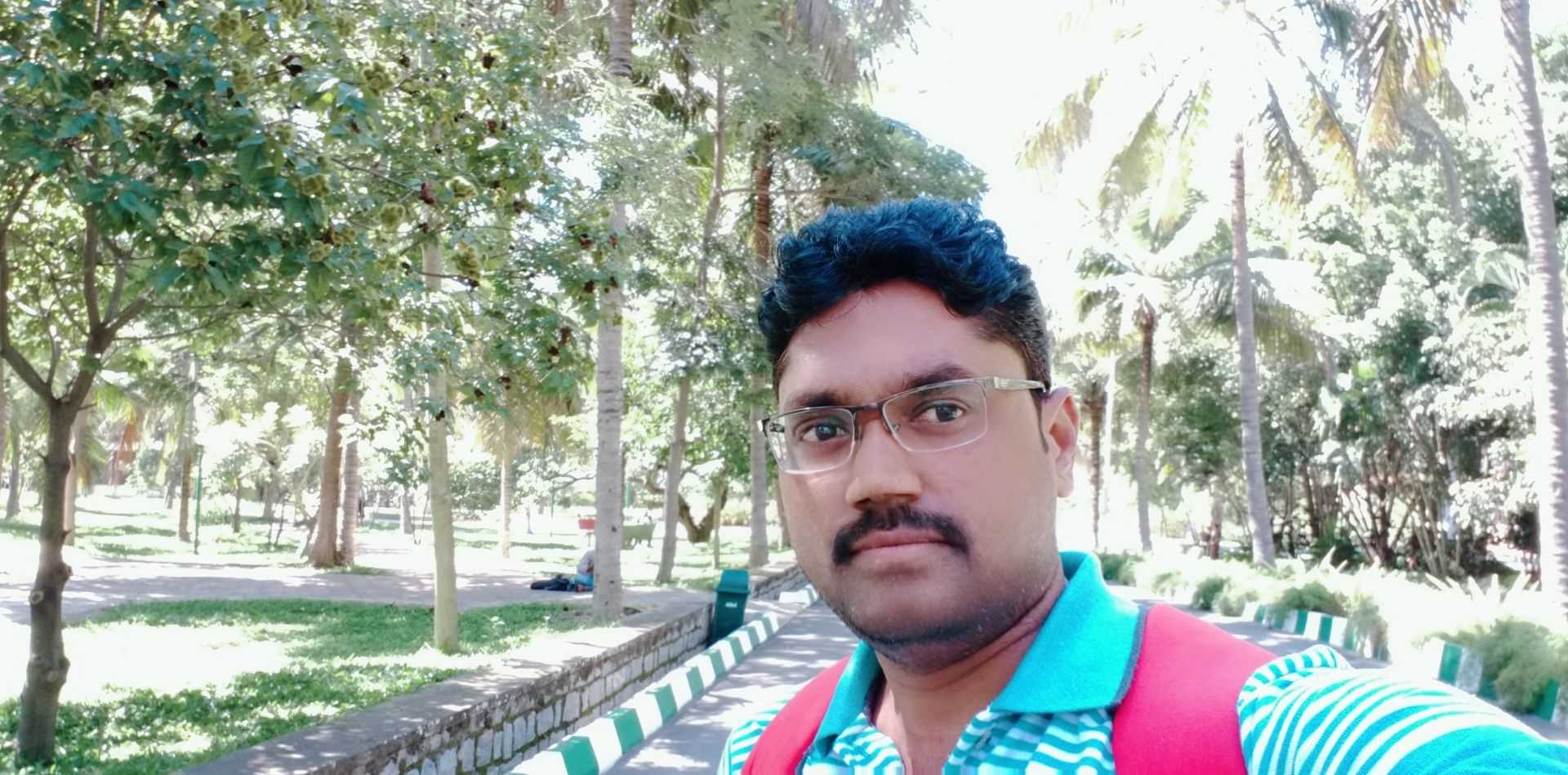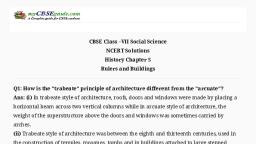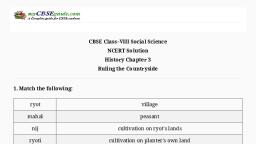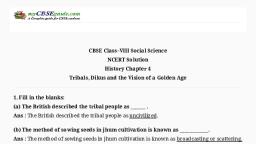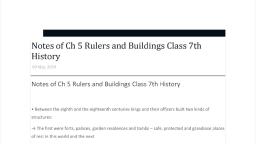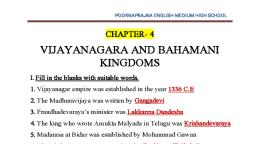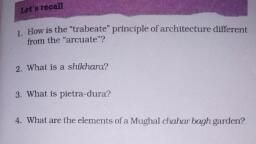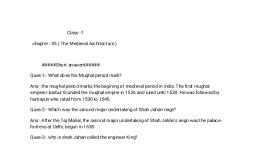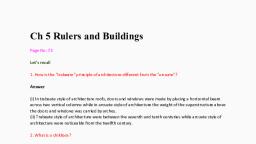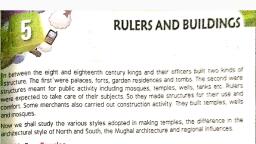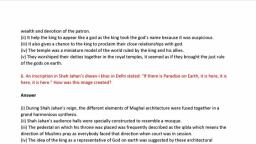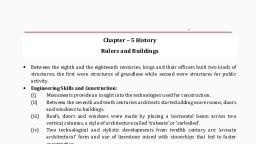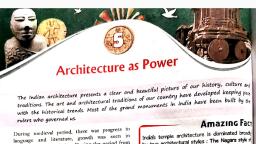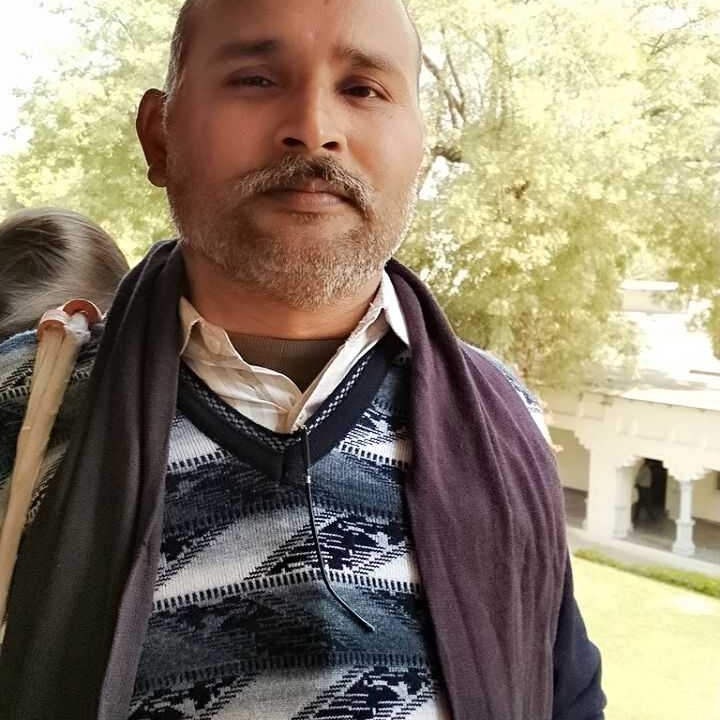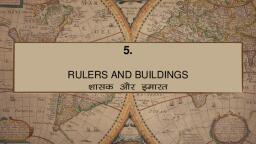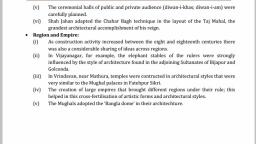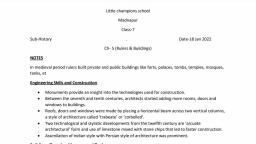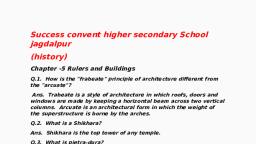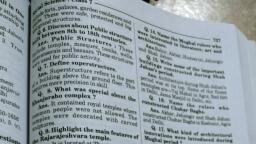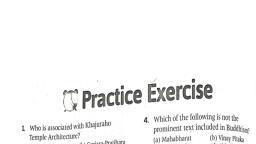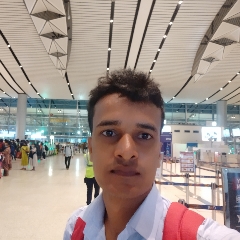Page 1 :
CBSE Class –VII Social Science, NCERT Solutions, History Chapter 5, Rulers and Buildings, , Q1: How is the "trabeate" principle of architecture different from the "arcuate"?, Ans: (i) In trabeate style of architecture, roofs, doors and windows were made by placing a, horizontal beam across two vertical columns while in arcuate style of architecture, the, weight of the superstructure above the doors and windows was sometimes carried by, arches., (ii) Trabeate style of architecture was between the eighth and thirteenth centuries, used in, the construction of temples, mosques, tombs and in buildings attached to large stepped, wells(baolis) .e.g. Quwwat-ul-Islam mosque, while arcuate style of architecture was, prominent from the twelfth century. Limestone cement was increasingly used, which made, construction easier and faster. e.g. Alai Darwaza at Delhi., , Q2: What is a shikhara?, Ans: Shikhara is the tower or spire of an Indian medieval temple. It is the highest roof of the, Hindus temples in India and abroad. It is also found on top of the mandapas. The shape, of Shikhara is like a small stupika or an octagonal cupola i.e. the Rajarajeshvara temple at, Thanjavur had the tallest shikhara amongst the temples of its time., , Q3: What is pietra-dura?, Ans: Pietra-dura is a decorative art, an architectural style in which coloured, hard stones, were placed in depressions carved into marble or sandstone creating beautiful, ornate, patterns. They are usually crafted on green, white or black marble stones. This word is, derived from an Italian word meaning 'hard stone' or 'semi-precious stone'.For example,, behind the Emperor Shah Jahan’s throne, were a series of pietra dura inlays that depicted, the legendary Greek god Orpheus playing the lute., , Q4: What are the elements of a Mughal chahar bagh garden?, Ans: The elements of a Mughal Chahar bagh garden are rectangular walled enclosures,, Material downloaded from myCBSEguide.com., , 1/4
Page 2 :
divided into four quarters by artificial channels. The Chahar bagh garden also had a, variation that historians describe as the “riverfront garden” in which the dwelling was not, located in the middle of the Chahar bagh but at its edge, near the bank of the river. Shah, Jahan adapted the riverfront garden in the layout of the Taj Mahal., , Q5: How did a temple communicate the importance of a king?, Ans:, i. A Temple communicated the importance of a king as they were meant to demonstrate the, power, wealth and devotion of the patron., ii. It helped the king to appear like a God as the king took the God’s name because it was, auspicious. For example, in the Rajarajeshvara temple, there is an inscription that, mentions that it was built by King Rajarajadeva for the worship of his God,, Rajarajeshvaram. The king's name is similar to God's name. Through the rituals of, worship in the temple one, God (Rajarajadeva) honoured another (Rajarajeshvaram)., iii. As each new dynasty came to power, kings wanted to emphasize their moral rights to be, rulers., iv. It also gives a chance to the king to proclaim close relationships with God and come closer, to people., v. The temple was a miniature model of the world ruled by the king and his allies., vi. They worshipped their deities together in the royal temples; it seemed as if they brought, the just rule of the Gods on earth., , Q6: An inscription in Shah Jahan’s diwan-i khas in Delhi stated: "If there is Paradise on, Earth, it is here, it is here, it is here." How was this image created?, Ans:, i. During Shah Jahan's reign, the different elements of Mughal architecture were fused, together in a grand harmonious synthesis. The ceremonial halls of the public and private, audience (diwan-i khas or aam) were carefully planned. These courts were also described, as chihil sutun or forty-pillared halls, placed within a large courtyard. The general public, was received here and their grievances heard., ii. Shah Jahan’s audience halls were specially constructed to resemble a mosque. In the, centre of the hall was placed the peacock throne on which Shahjahan would sit and, Material downloaded from myCBSEguide.com., , 2/4
Page 3 :
preside over the meetings., iii. The pedestal on which his throne was placed was frequently described as the qibla which, means the direction in which Muslims pray as everybody faced that direction when court, was in session. The stream of paradise would flow through the centre of the Diwan-i-khas, and the arches at the corner of the hall bore inscriptions from the lines of the famous, 9thcentury Persian poet Firdausi., iv. The idea of the king as a representative of God on earth was suggested by these, architectural features., Therefore, by the means of architecture style, this image was created., , Q7: How did the Mughal court suggest that everyone – the rich and the poor, the, powerful and the weak – received justice equally from the emperor?, Ans:The Mughal court suggested that everyone – the rich and the poor, the powerful and the, weak – received justice equally from the emperor:, i. The architectural features highlighted the idea of the king a representative of God on, earth. Hence people could identify with the king as a just God., ii. The connection between royal justice and the imperial court was emphasised on by, Emperor Shah Jahan in his newly constructed court in the Red Fort at Delhi., iii. There were a series of pietra dura inlays behind the emperor's throne which depicted, that legendary Greek God Orpheus playing the lute. It was believed that Orpheus’s music, could calm ferocious beasts until they resided together peacefully., iv. The construction of the audience halls aimed to communicate that the king's justice, would treat the high and the low as equals creating a world where all could live together, in harmony., , Q8: What role did the Yamuna play in the layout of the new Mughal city at, Shahjahanabad?, Ans: The city of Shahjahanabad constructed by Shahjahan at Delhi was established on one, side of river Yamuna. The role of the Yamuna in the layout of the new Mughal city at, Shahjahanabad was:, i. The imperial palace commanded the front of river Yamuna in the new city of, Material downloaded from myCBSEguide.com., , 3/4
Page 4 :
Shahjahanabad in Delhi., ii. Only especially favoured nobles, like Shah Jahan's eldest son Dara Shukoh were given, access to the river., iii. All others had to construct their homes in the city away from the River Yamuna., iv. The access to the river Yamuna for the nobles was controlled by developing architectural, form in which the white marble mausoleum was placed on a terrace by the edge of the, river and the garden was to its south., , Material downloaded from myCBSEguide.com., , 4/4
